Falcon Heavy
01/16/2023. After waiting years for one, I've enjoyed two twilight launches in the space of a single month. The first was a SpaceX Falcon 9 flying at sunset into a long-anticipated composition with Charlotte. The second was a Falcon Heavy with twin boosters returning to Cape Kennedy. A 34-minute launch window opened at 5:56, about 15 minutes after sunset. Amy and I returned to Thunder Hill.
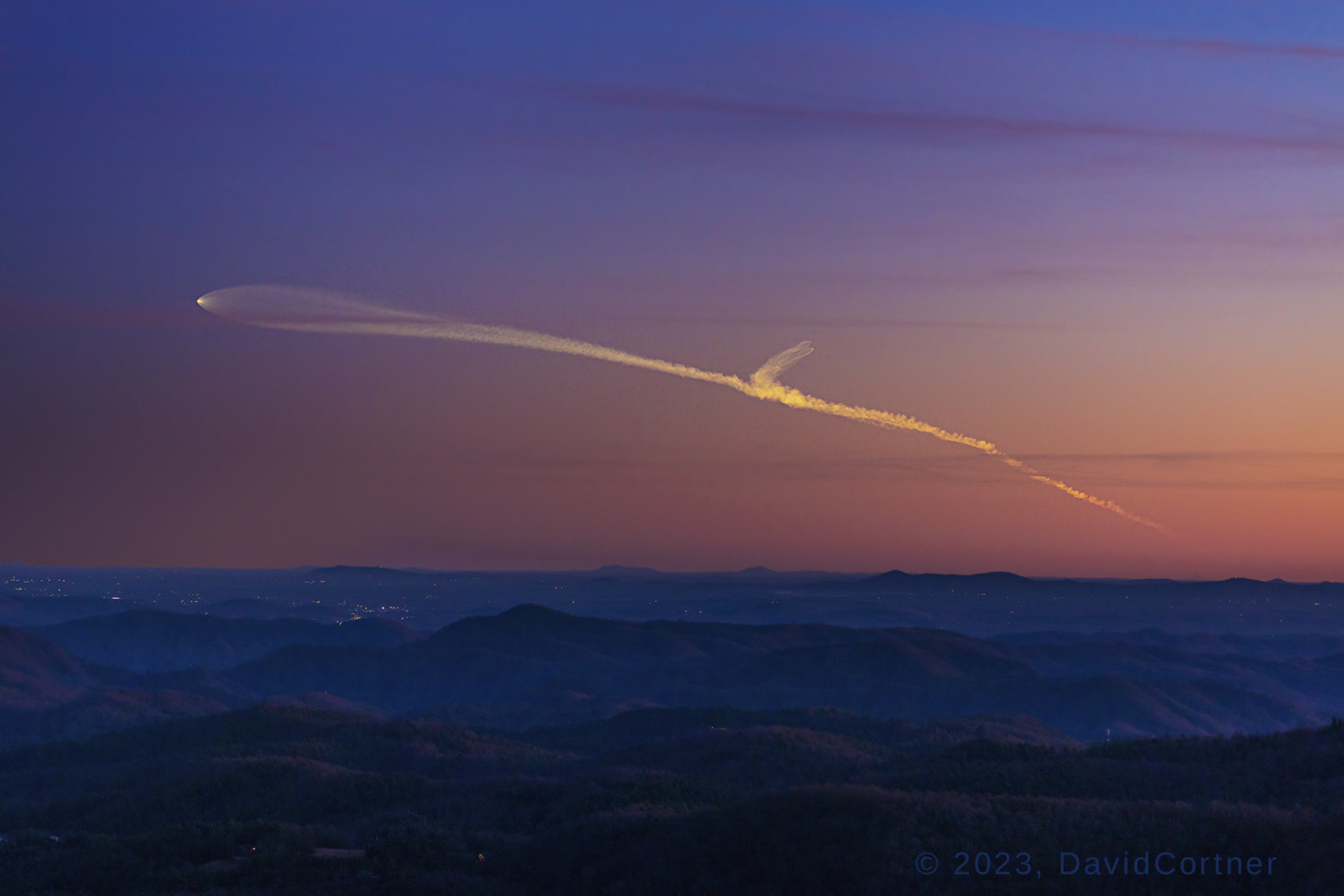
Click (almost) any photo on this page for a better look.
We met Kay and Patrick at the Happy Valley Filling Station where I kept an eye on the latest news. Kay thought Alex would enjoy the show, too, and texted him. When we were within about an hour of liftoff, the four of us caravaned up the mountain. The Blue Ridge Parkway was closed, gated at US321 after a sudden snow and deep freeze a couple of days ago. No worries: local knowledge (or some nimble map-reading) means the Thunder Hill overlook is always accessible.
We arrived to find Alex all but hidden in a new, heavy, birthday coat. Anne and Lillian waited in the car. Yesterday, the wind blew 30-45mph here and the temperature was around 20. I've been up here in those conditions exactly once and have no plans to be here in them again. When this flight was scheduled for yesterday, I planned to watch from down at the foot of the mountains. Today, the temperature rose above freezing and the wind calmed to barely a breeze.
I put two cameras on tripods: the R6 with the 105mm Sigma for stills, the 6D and 85mm Rokinon for video. Then I did a lot of hand-waving and pointing and explaining what we ought to see while giving a little ear to the YouTube stream of launch preparations. The stream is delayed 20-30 seconds. When the stream said 60 seconds and still counting down toward a 5:56 launch, I pressed 'record' on the 6D and left it alone for the next nine and a half minutes. The Sun was barely five degrees below the horizon. I turned the phone off and waited and watched.
A thread of bright orange light appeared in the haze just over the southern horizon. Frame by frame examination of the 6D's video says that the first glimmer appeared at mission elapsed time 2:08 (altitude 42km); it was easy for me to see by 2:15 (48km). I made the photo below a few seconds later.
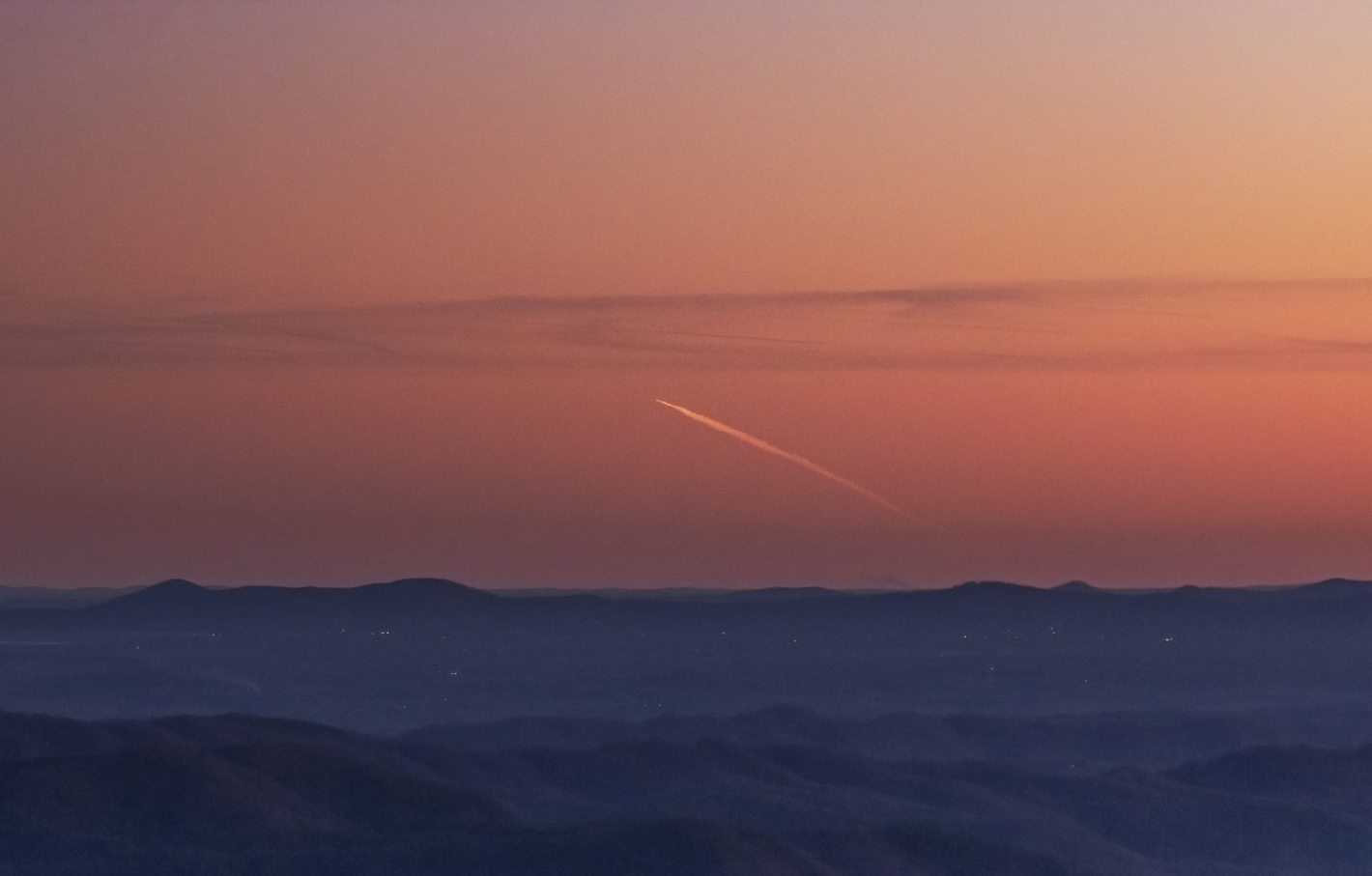
That is what five million pounds of thrust looks like climbing out of the atmosphere 530 miles away. Not long after the rocket's first appearance, Lillian said that the trail appeared to have split. I saw no hint of that, and the view in the 105 showed me nothing of the sort. But the side boosters had, in fact, separated. Sharp eyes
must be nice.
The boostback burn was plain to see; I tripped the electronic shutter in the R6 a couple of dozen times. I imagined I might need to stack several frames to improve signal-to-noise in the finished photo, but no need; the R6 sensor is very quiet at ISO 800. Here's one frame out of so many:
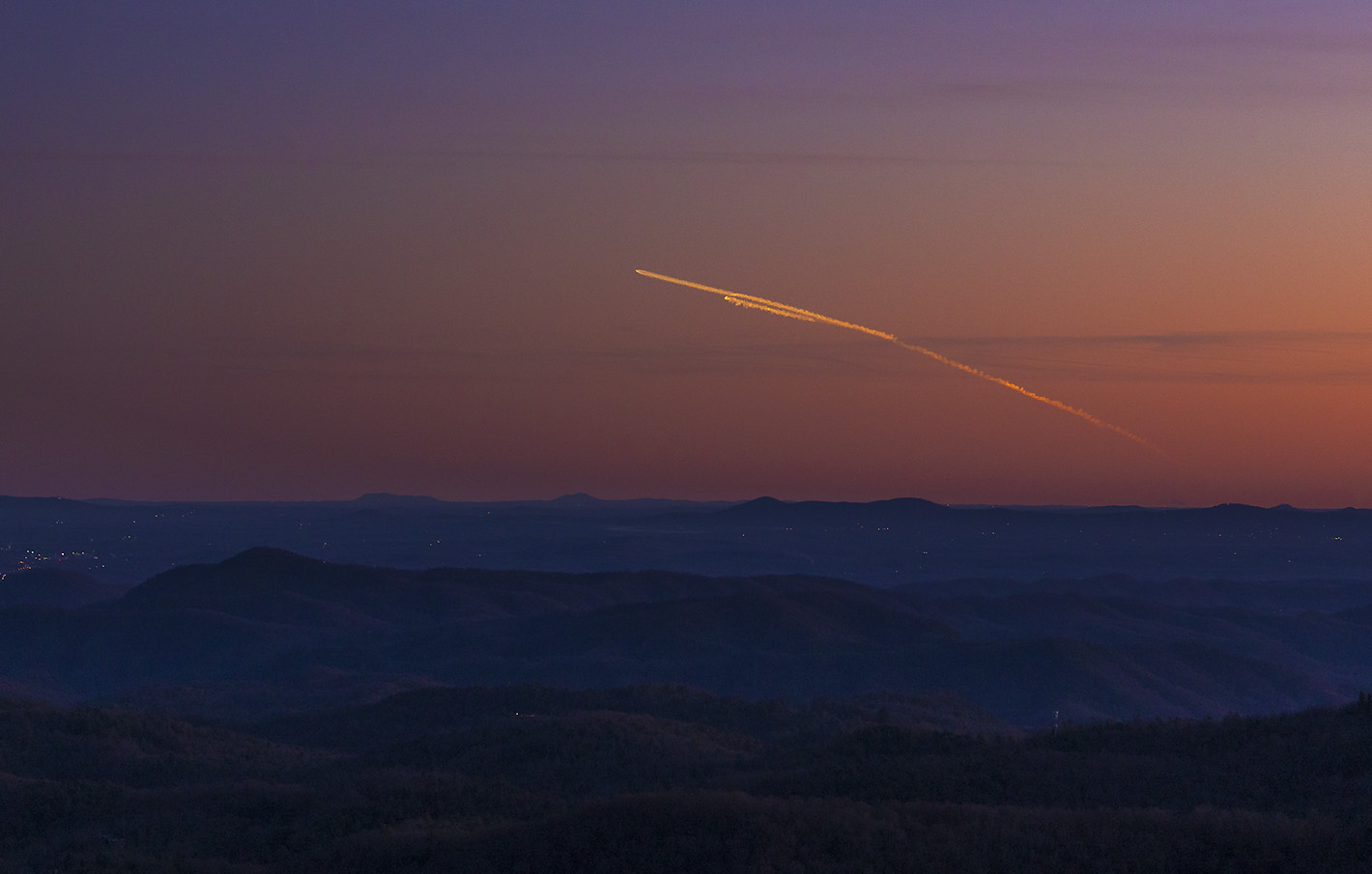
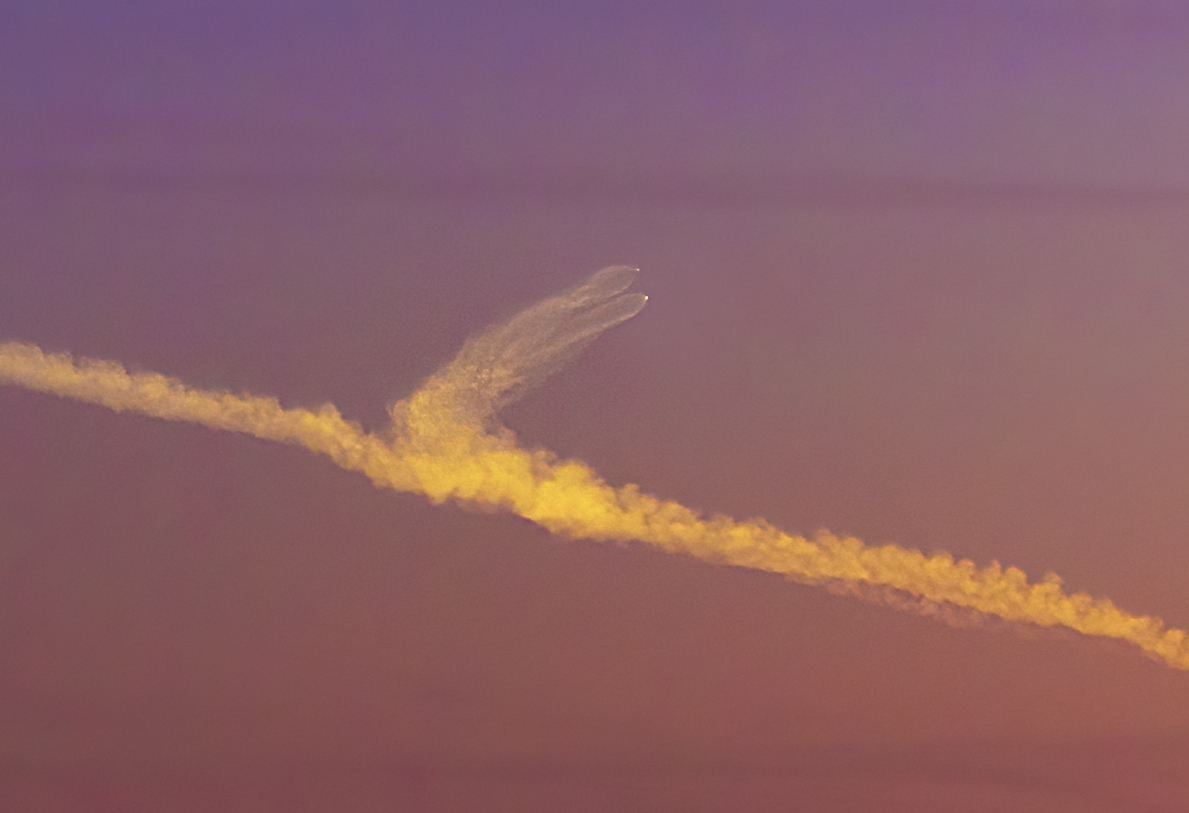
Have I mentioned that the 105 is a wonderfully sharp lens? This and the next
image are tight crops from the overview at the top of this page.
While the two side boosters arced back toward Florida, the center core and the upper stage accelerated to the east.
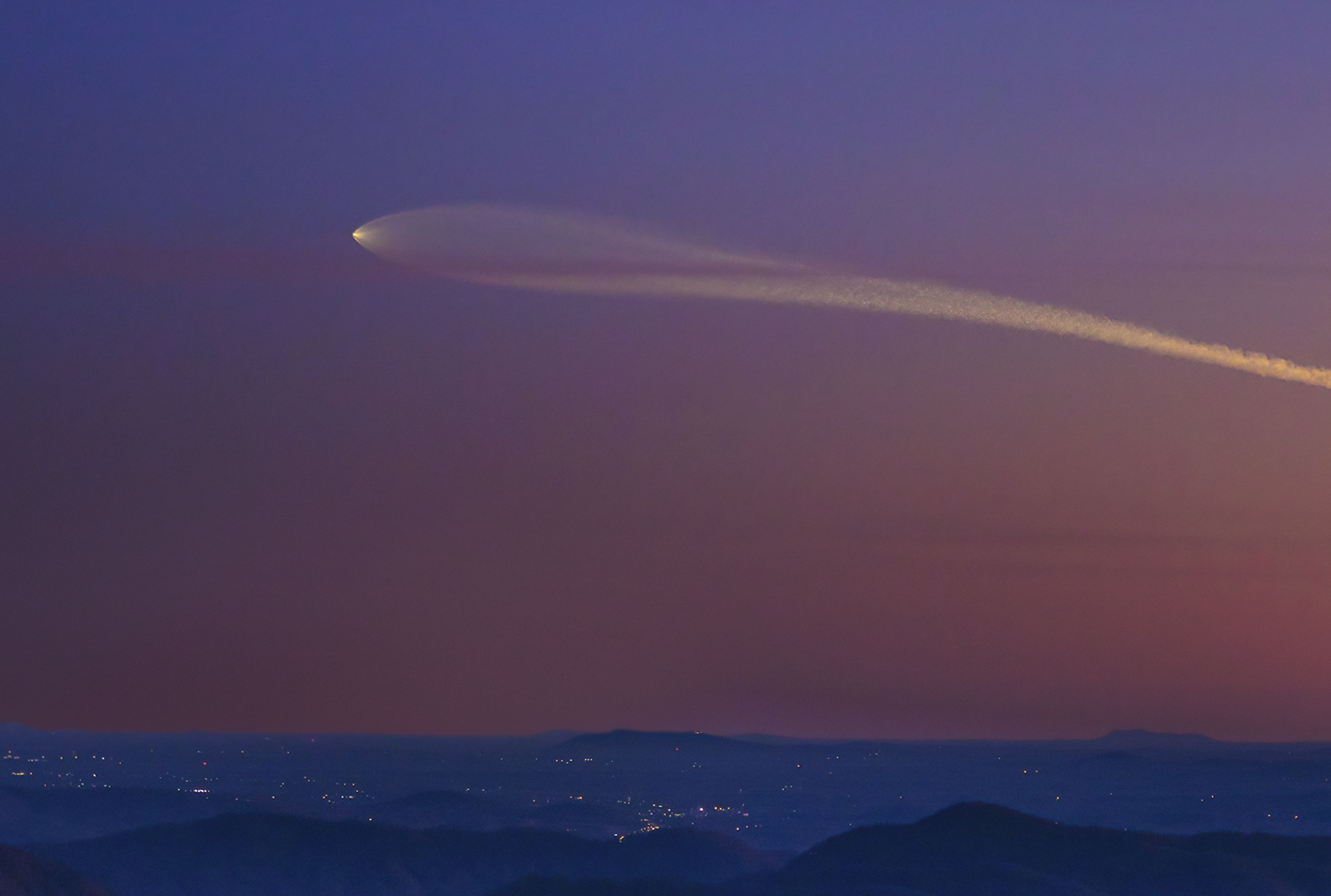
The plume disappeared when the center core shut down. A spark appeared with the ignition of the upper stage several seconds later and a few degrees onward, but the twilight show was effectively over at that point. The cloud remained, glowing, dimming, growing more diffuse, drifting east for at least another 45 minutes.
The boosters were still making their way west to their landing zones. In the 6D's video, several white sparkles appear as the boosters' nitrogen thrusters fire, but we saw none of that in person. We all fell to talking and did not see their reentry burns, either. The video showed them to be dim and brief. I would not have seen them without binoculars. I stacked about 30 frames from near the end of the 6D's video and got this photo of the side cores returning:
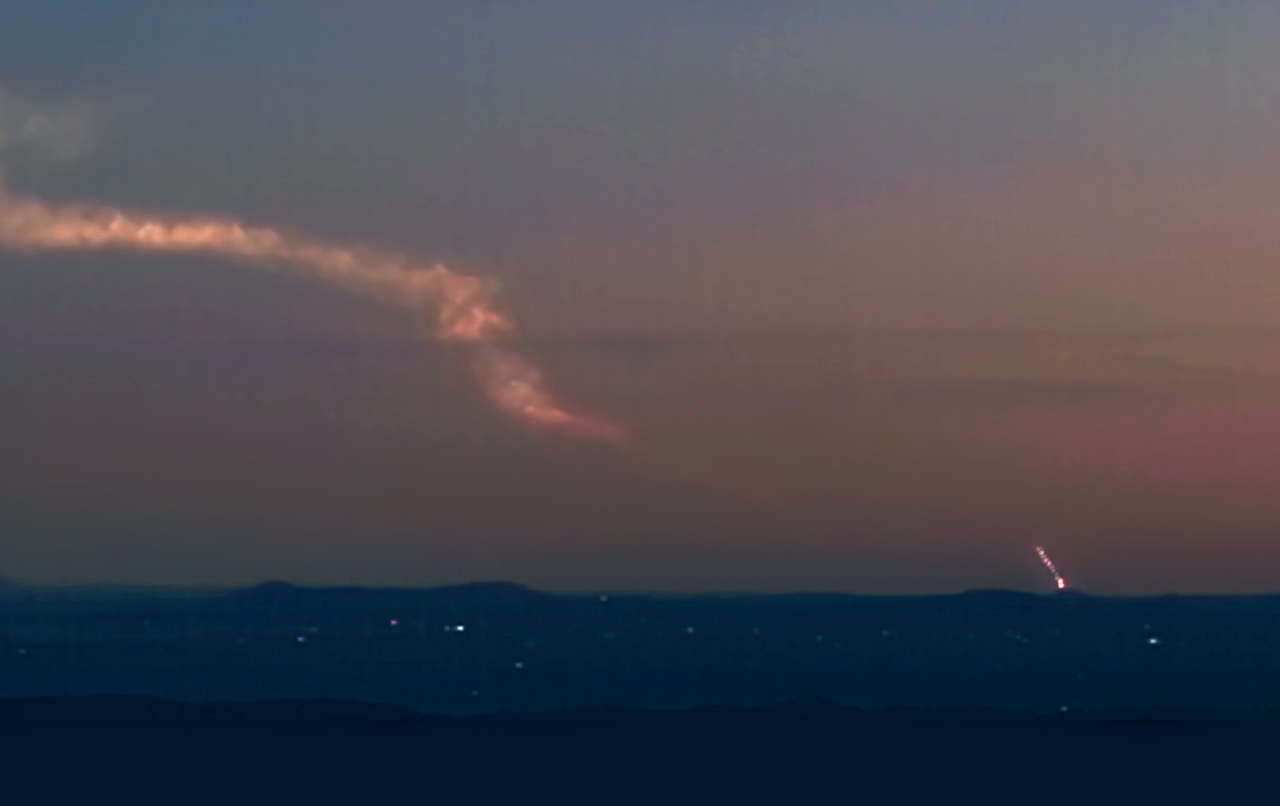
By correlating these images and the 6D video with SpaceX's coverage which is tagged with mission-elapsed time and with telemetry, it's easy to isolate a few unambiguous events (center core shutdown, upper stage ignition, reentry burn with one, then three engines) and read off exact times and altitudes. For one thing, it's clear that the line of sight from Thunder Hill to Cape Kennedy passes about 130,000 feet (just under 40km) over the Cape. When rockets reach that altitude, they rise into Thunder Hill's sky. (Why, you might ask, is that limit, measured using the reentry burns, slightly lower than the one suggested by ascent visibility? Well, I'll tell you. It's probably because the lighter sky during ascent made contrast lower. The bright, post-sunset sky was just too bright and thick for the rocket's red glare to penetrate; it had to be higher, with less air in the way, to be visible. Six minutes later, the sky was considerably darker. It's surprising how fast that happens if you measure it. The eye adjusts as darkness falls; the CMOS does not.)
The video is on Vimeo. It's 1080p, sped up to 5x actual speed (except for booster reentry burns which are shown in real-time). Click the pic:
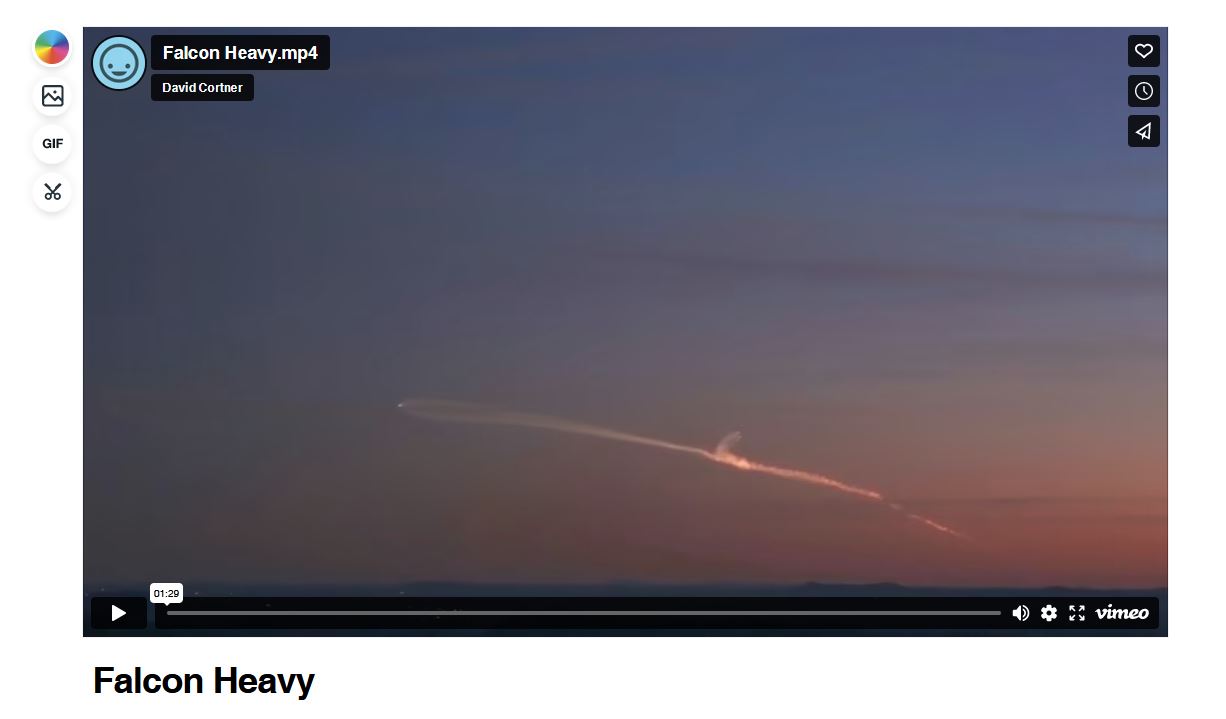
01/18/2023. It would have been three twilight launches, except SpaceX delayed this morning's Falcon 9 GPS satellite launch so long that it would be best seen only 2-3 minutes before sunrise. I was up and out the door anyway, intending to have a look from the community lot, but I didn't even get to the car before fog and high clouds convinced me that coffee was a better idea.
I put this graphic together while watching the GPS launch online. It aligns and superimposes the liftoff and return images at the same scale:
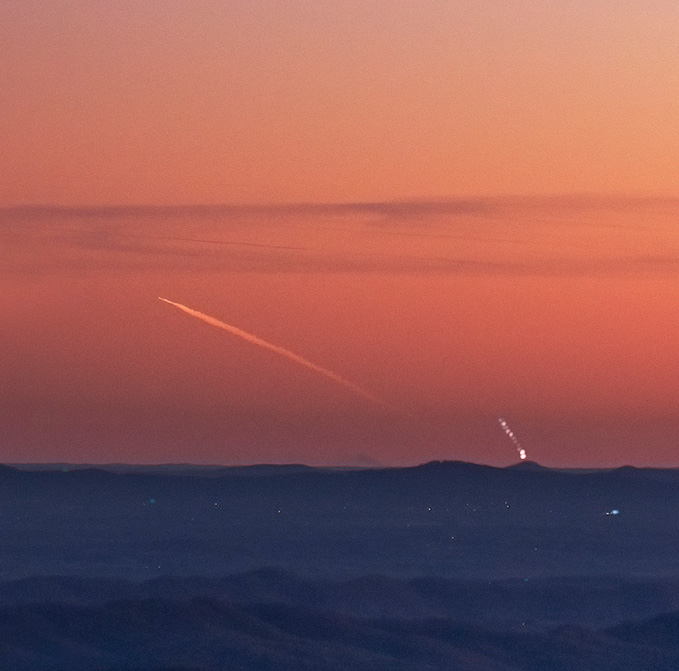
Home by another way.
On the next page is a graphic superimposing elevations over the view of east-bound launches as seen from Thunder Hill. Executive summary: if you want to see them from anywhere nearby, the Parkway is the place to be.
:: top ::
|